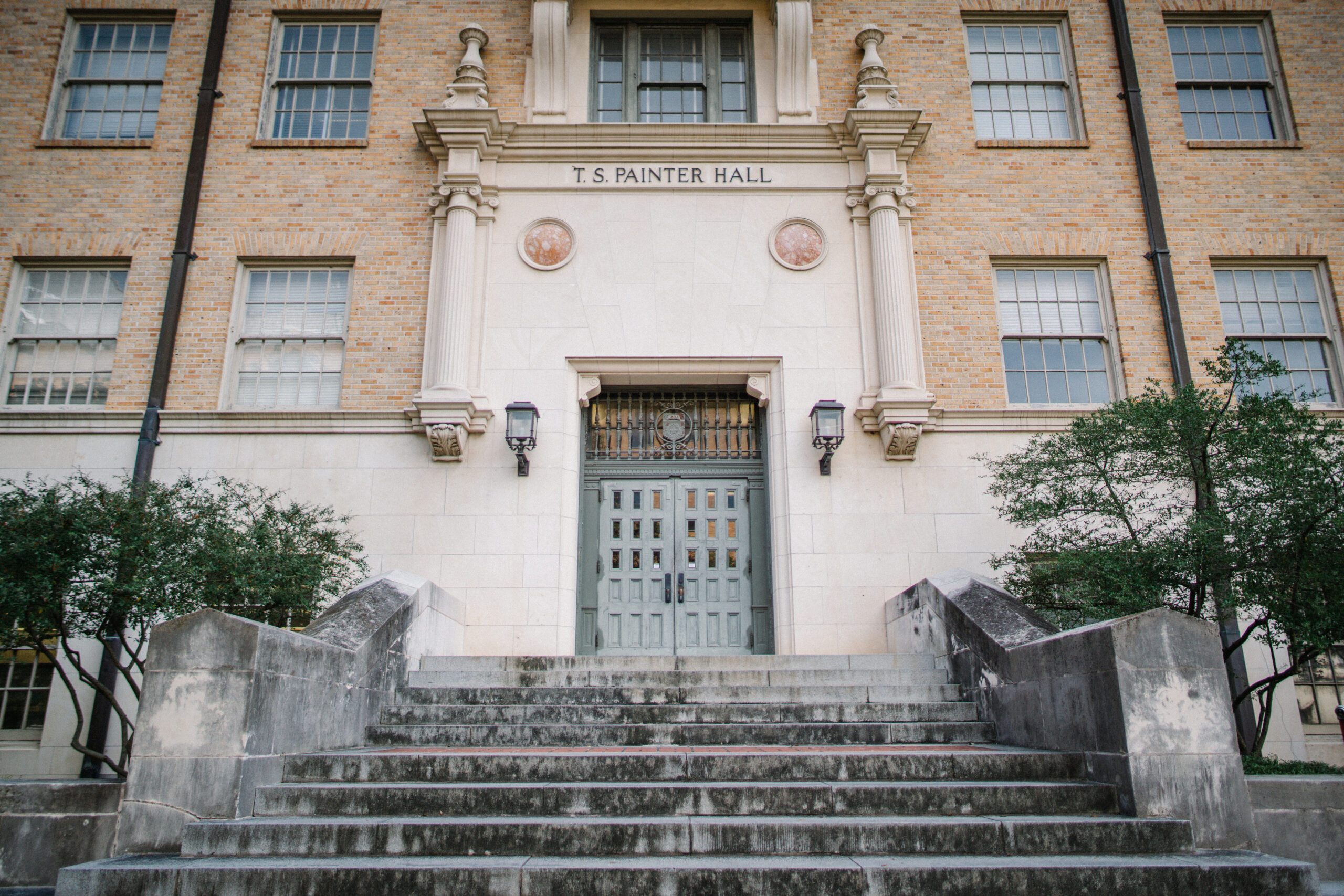
The Sweatt V. Painter Case
(1946 – 1950)
This project recognizes Heman Sweatt and other key figures by narrating their legal struggle for racial equity in higher education at UT and around the country.

Breaking Barriers
A Story in Three Parts:
SWEATT V. PAINTER
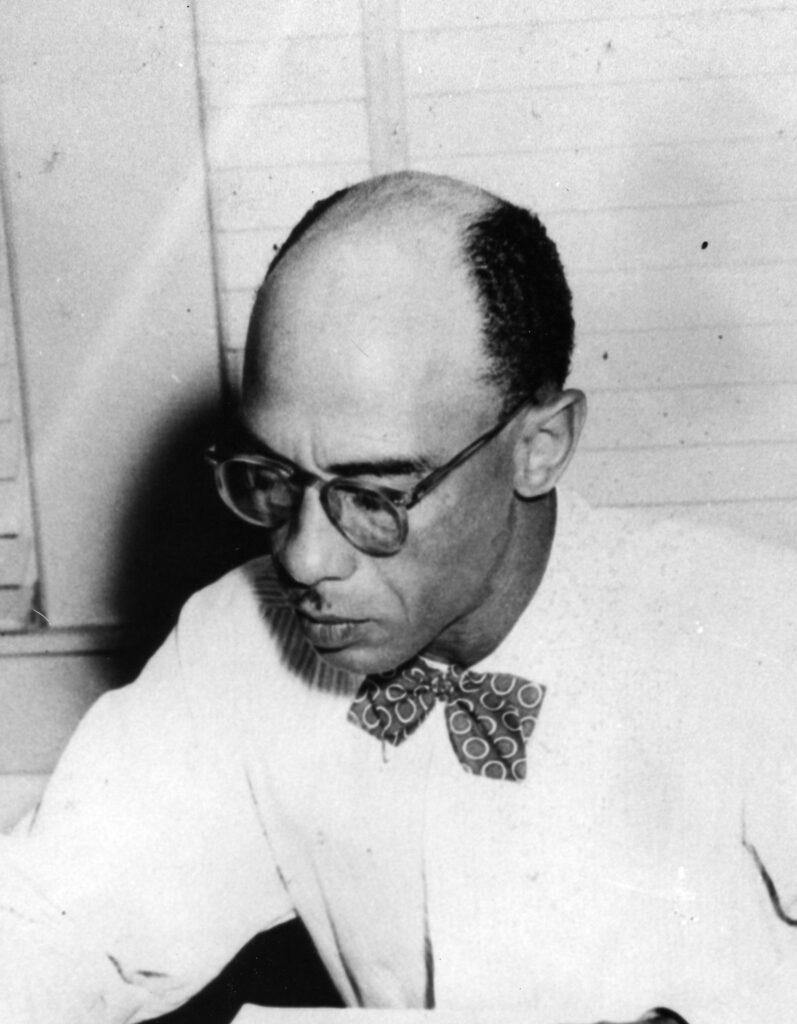
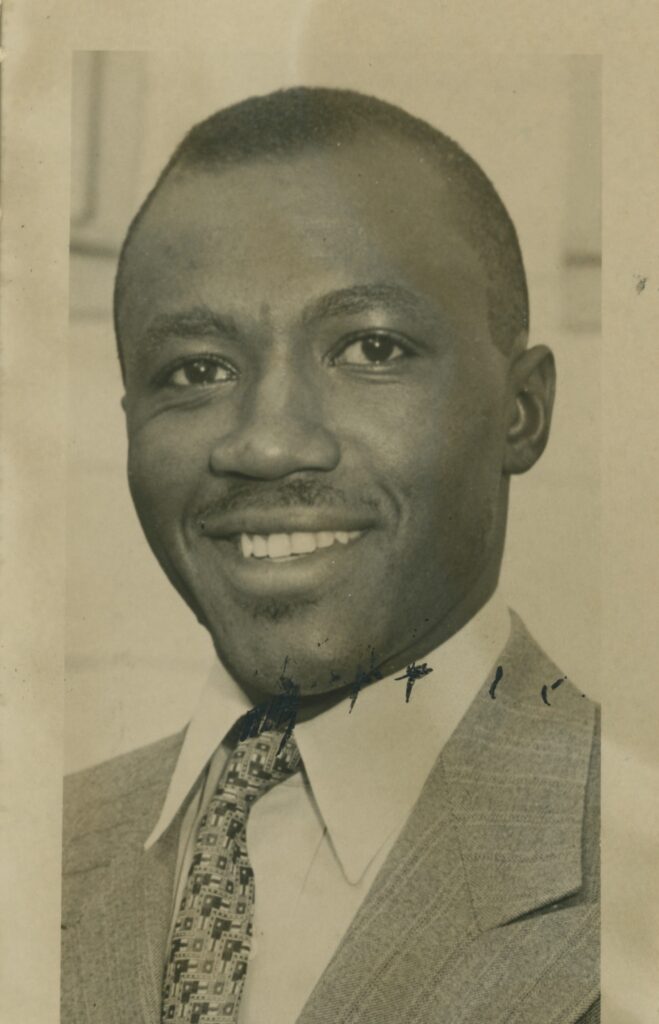
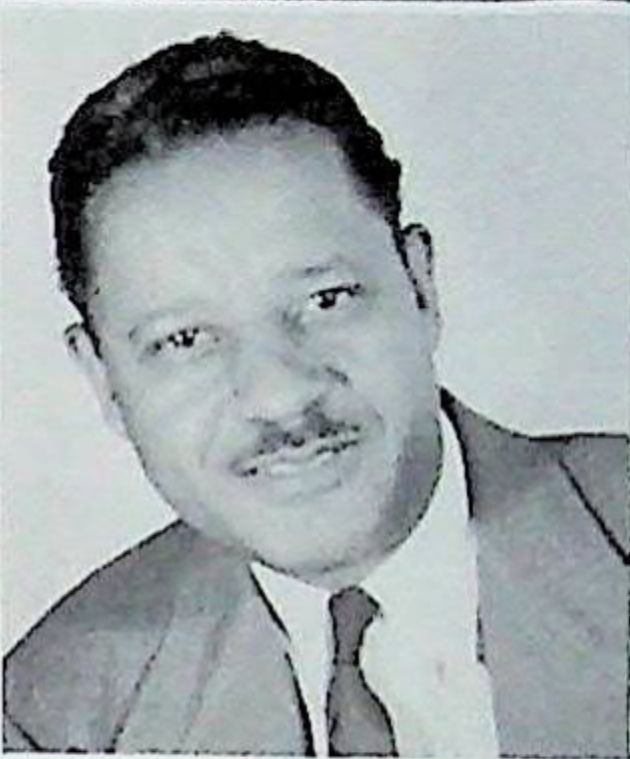
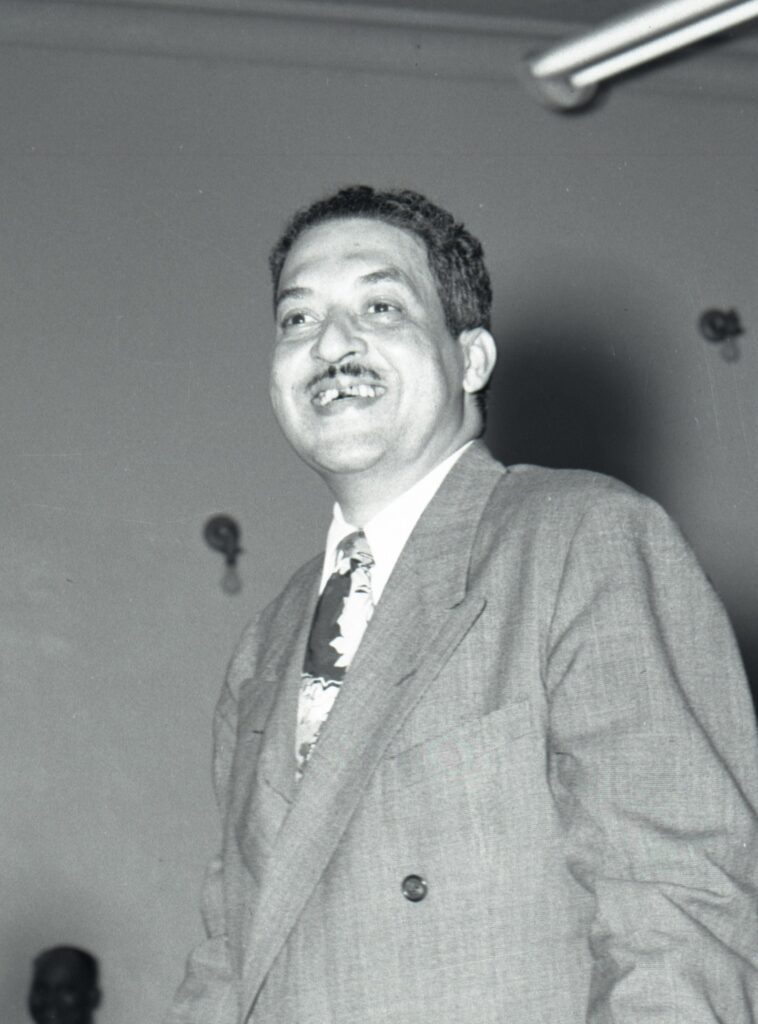
NAACP state organizers searched for more than a year to find someone qualified and willing to be the plaintiff in a case against The University of Texas. They hoped to build a case to end segregation and take it all the way to the U.S. Supreme Court. In 1945, Executive Secretary of the Houston NAACP Lulu Belle White approached Heman Marion Sweatt, a Houston native and graduate of Wiley College in Marshall, Texas. Wiley College, one of the first HBCUs west of the Mississippi, was an important incubator for civil rights activists, including: Melvin B. Tolston, James Hemenway Morton, and James Leonard Farmer, Sr.
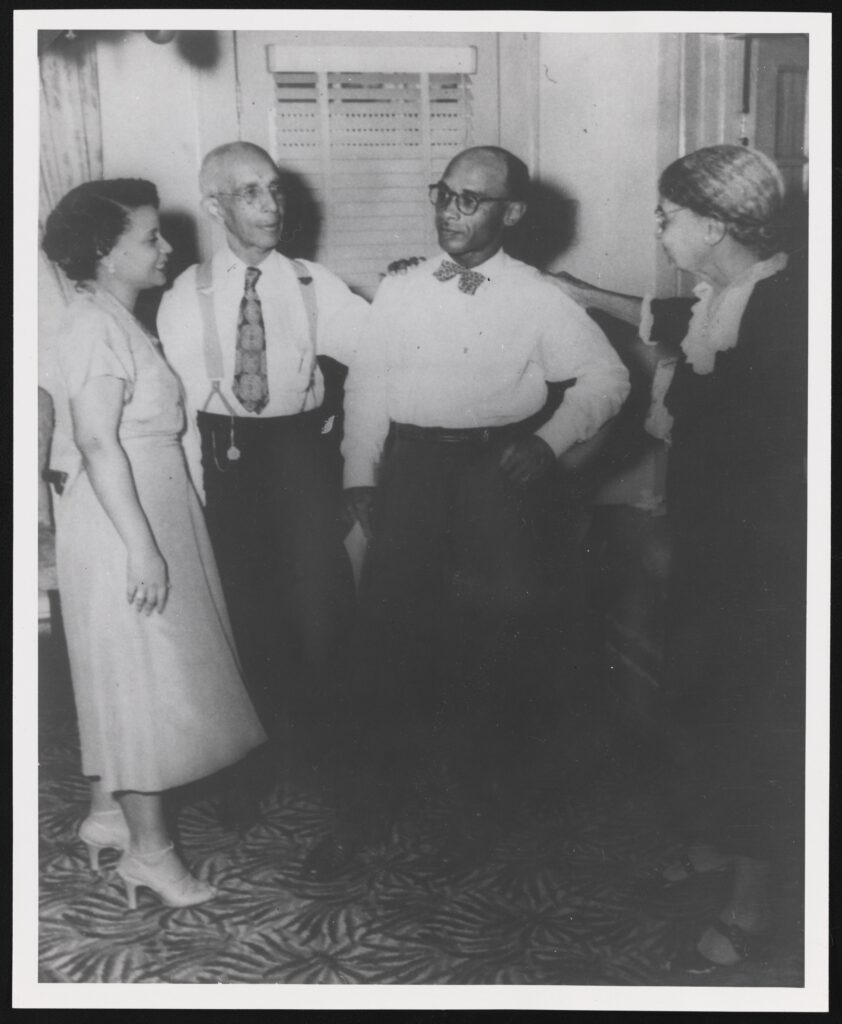
Sweatt had grown up around Black Texan civil rights leaders. His father, James Leonard Sweatt, was a founding member of Houston Chapter of the NAACP, his barber was Richard Grovey from Grovey v. Townsend, and his dentist was Lonnie E. Smith from Smith v. Allwright— two U.S. Supreme Court cases that helped end the all-white voting primaries in Texas.1 Sweatt fought against the white-only primaries in Texas, helped with voter registration drives in the 1940s, and occasionally wrote articles for the Black newspaper the Houston Informer.
The soon-to-be plaintiff Sweatt took some graduate courses at the University of Michigan, but due to limited funds and ill health, returned to Houston, Texas, where he worked as a mail carrier. As Secretary for the National Alliance of Postal Employees, Sweatt successfully organized bringing the grievances of Black postal workers with the Postmaster to fight the racial discrimination evident in the post office when, against federal regulations, Black employees were kept from advancing to clerk and subsequently ineligible for promotions to supervisory positions.2 After his recruitment by Lulu Belle White, Sweatt consulted with Attorney William Joseph Durham, a self-taught leading Black Texan civil rights lawyer, who worked in collaboration with Thurgood Marshall and James M. Nabrit Jr. of the Legal Defense Fund of the NAACP, which litigated hundreds of civil rights cases across the South. With Sweatt, the lawyers launched a case that eventually broke open the doors of the all-white flagship school in Texas and led to desegregating education in the United States.
When Sweatt applied to UT Law School in 1946, Black students in Texas attended segregated schools, as mandated by the 1876 state constitution. He traveled with the NAACP delegation, which included Lulu Belle White and R.A. Hester of the Progressive Voters League, from Samuel Huston College to UT’s Main Building to meet with the university’s President Painter and his staff. Sweatt’s delegation debated the state’s segregationist policies with Painter. At an agreed upon moment, Sweatt presented the President with his Wiley College transcript and formally asked for admission to the Law School, anticipating a rejection. The UT staff attempted to persuade the group to retract the application and the meeting adjourned without resolution.3 After the meeting, Painter alerted Attorney General Grover Sellers that the NAACP’s long-anticipated legal assault on academic segregation in Texas had commenced, famously stating that Sweatt was qualified, “save and except for the fact that he is a negro.”4
Painter’s subsequent rejection of Sweatt’s application, based on Seller’s legal determination, created the basis of Sweatt’s now-famous lawsuit. Initially, Sweatt’s legal team sued the University in May 1946, requesting a mandate to admit Sweatt to the law school. The court, following a hearing in June of that year, denied Sweatt’s entry to UT but recognized that no equivalent law school for Black students existed and so extended the case to allow the state six months to provide separate but equal facilities for Black students desiring to go to law school.
At the end of that six-month period, the Court denied Sweatt’s petition in December of 1946, ruling that a resolution passed by the Texas A&M University board of directors to provide law education on demand for Black students satisfied the state’s obligations.5 Yet, there was still no law school and Sweatt’s team appealed.
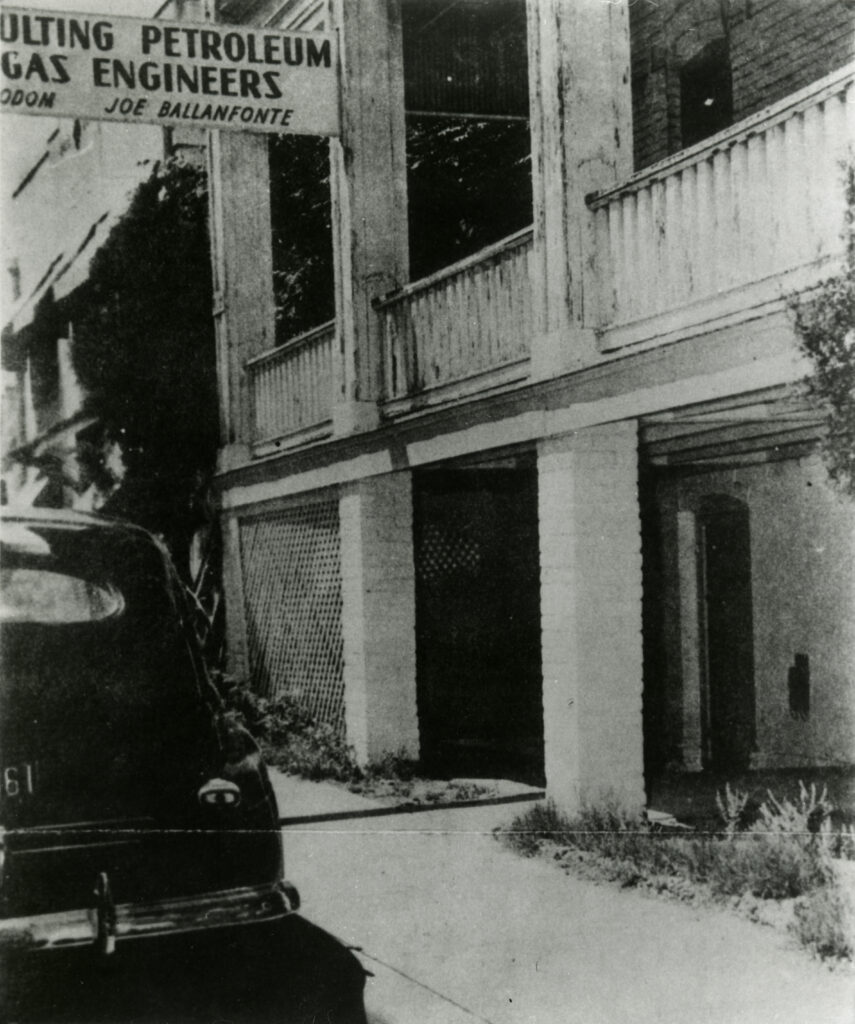
By March of 1947, the Legislature made urgent appropriations of $2.5 million to open the Texas Southern University for Negroes in Houston (TSUN, now TSU). University of Texas officials opened a temporary “basement,” two-room law school for Sweatt to attend in a rented petroleum firm in downtown Austin while the TSUN Houston campus was under construction. At T.S. Painter’s directive, the Dean of the UT Law School and the librarian, who had joint appointments at TSUN, used $100,000 in emergency appropriations to buy law books to try to give TSNU Law the appearance of an “equal” facility. No one, including Sweatt, enrolled when it opened in March 1947.
That same March, Sweatt’s appeal was remanded back to the state district court for a new trial. In May of 1947, Sweatt’s case was heard over a 5-day period in the Travis County Courthouse. For judgement was whether the law school for Black students met the standards for separate but equal facilities. The district court ruled in favor of the University and denied Sweatt’s petition again, after which the Texas Supreme Court did the same.
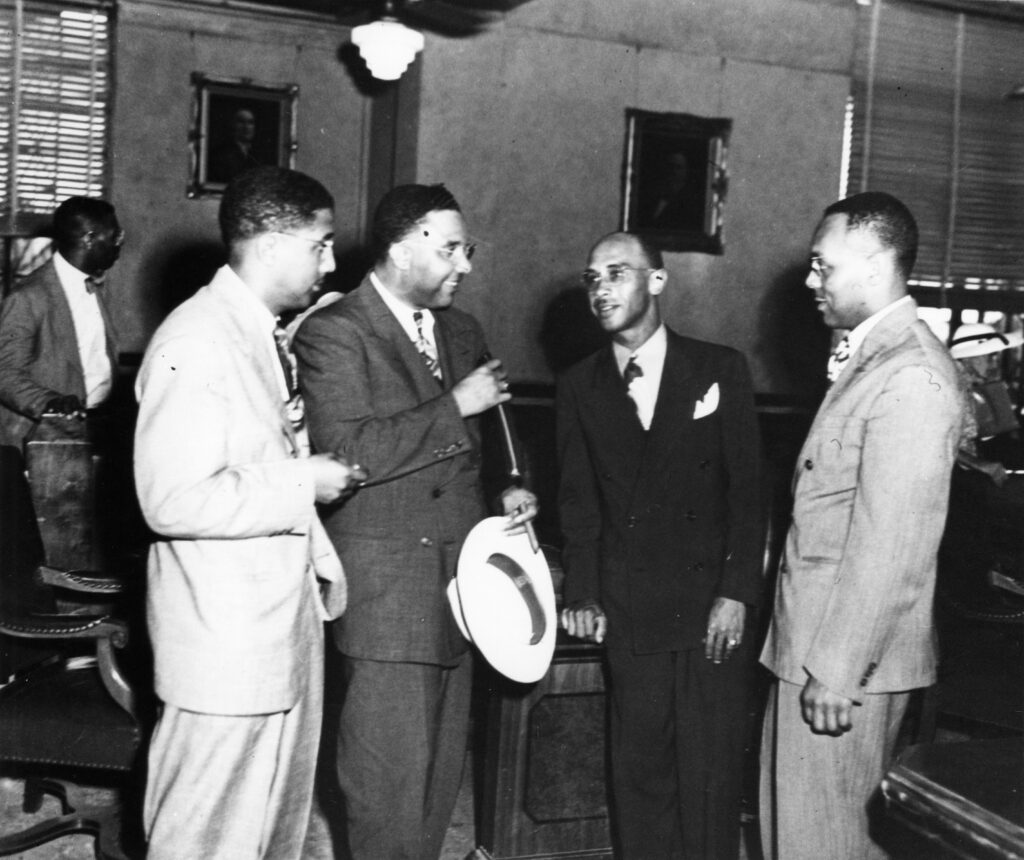
John Quill Taylor King, an early UT Black doctoral graduate who received his degree in 1957, recalled sitting down on a middle bench in the crowded courtroom in his army uniform to watch, having just returned from serving with the 93rd Infantry overseas. King signaled other Black military members to sit next to him when the bailiff ordered the servicemen out of the seats, saying those were reserved for whites, and directed officers to remove and arrest them. King waved Thurgood Marshall over to help, to which Marshall said, “Let them arrest you so I have another case to take.” In response, the officers allowed the G.I.s to remain sitting where they were, effectively integrating the courthouse, though King recalled that it wasn’t permanent.6
The wider Black community in East Austin pooled their resources and support for the Sweatt family and cause. Ada Anderson, an early Black graduate student at UT, recalled that her family and other community members helped provide the Sweatts with a place to live, collecting money for their rent and food since the people involved with the case were so “cut off from everything.”7 The NAACP lawyers couldn’t stay in local hotels which were segregated, so they were housed within the community instead. Anderson recalled that NAACP lawyers often wrote briefs at her neighbors’ house.8
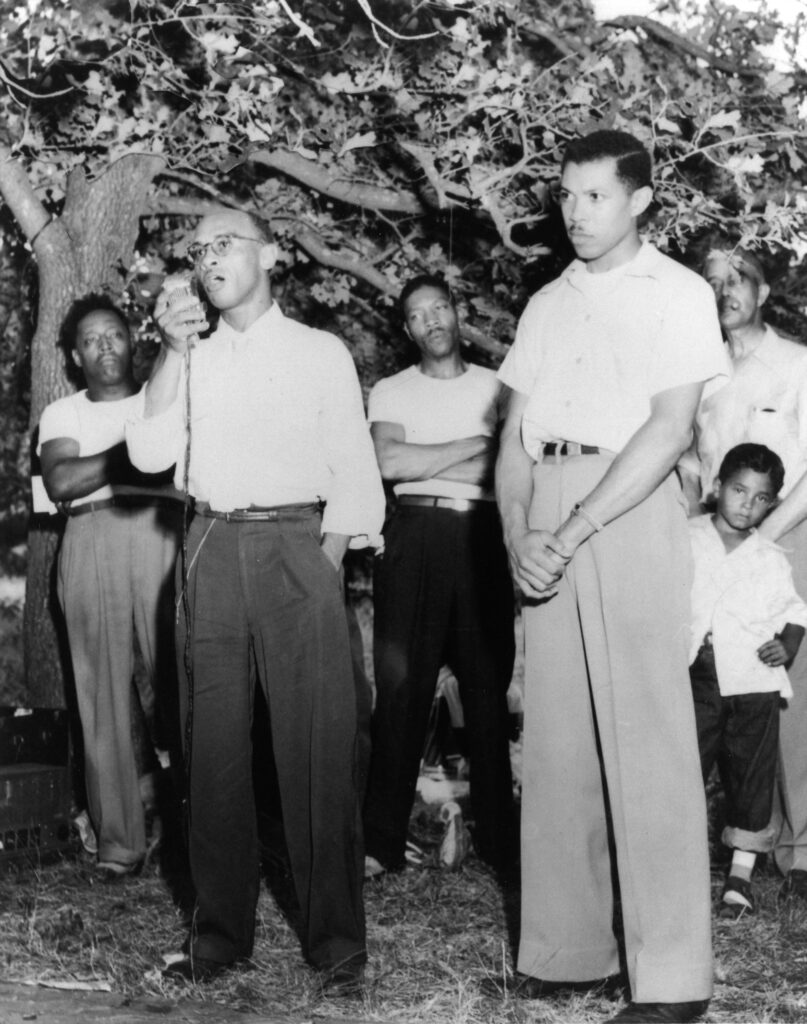
Sweatt’s efforts were not singular, rather, they formed part of individual and collective strategies to target segregation in higher education. The Black newspaper The Dallas Express featured Sweatt as the “Man of the Year” on its cover in 1946, stating: “As a symbol, Heman Marion Sweatt marks the emergence of the Negro in Texas as an adult and a citizen.”9
In December 1947, Tillotson professor William Astor Kirk attempted to enroll for graduate studies in government at The University of Texas with the support of his and Sweatt’s former Wiley professor, James Hemenway Morton. Morton had moved to Austin to teach at Samuel Huston College (today Huston Tillotson University) and served as the president of the Austin Chapter of the NAACP. Attorney William Joseph Durham and his associate C.B. Bunkley, Jr. filed suit for Kirk in early 1948, adding to the growing pressure on state leaders. University officials tried to force Kirk to take classes alone and off campus in the YMCA, but Kirk declined this separate treatment.
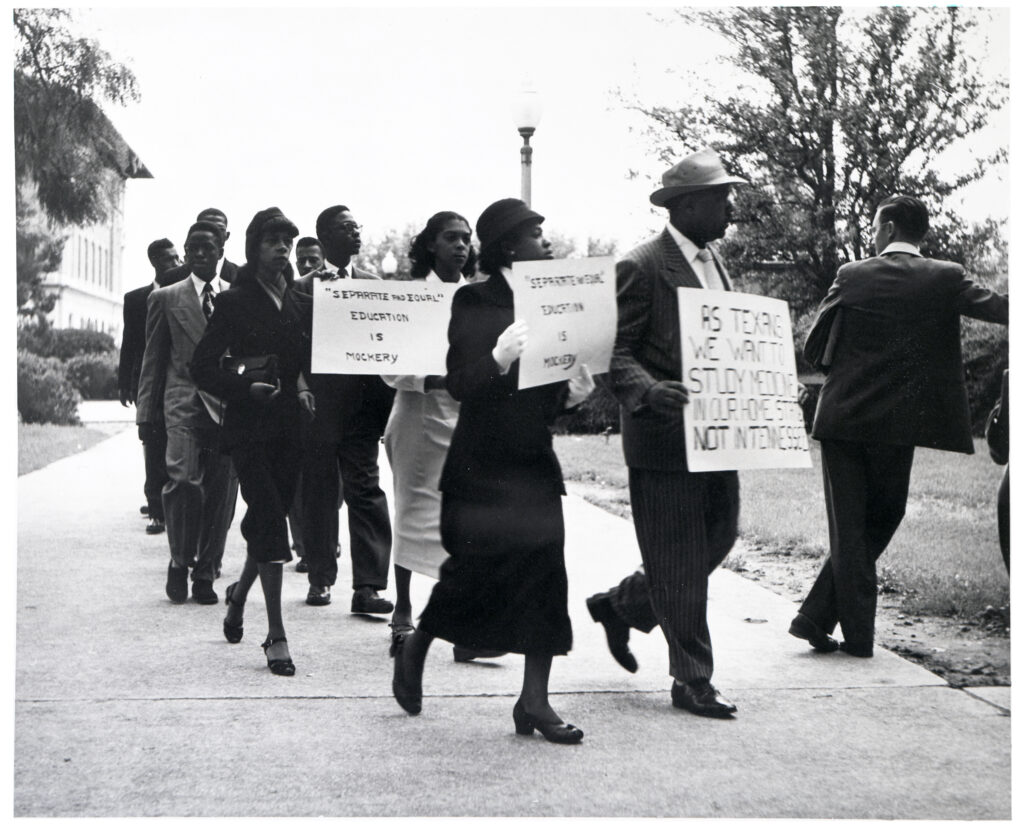
Texas NAACP Secretary Donald Jones warned university officials that more lawsuits like Sweatt’s would follow.10 By the spring of 1949, Black students from across the state took matters into their own hands and organized a mass registration protest to converge on the capital city in a show of force to state leaders of the wide support for the Sweatt case. On April 27, 1949, with the blessing of their college presidents and the help of several of the local faculty at Samuel Huston College and Tillotson College, more than 35 Black college seniors—from Samuel Huston College and Tillotson College in Austin, Bishop and Wiley Colleges in Marshall, and Jarvis Christian College in Hawkins—held protest signs and quietly marched on the UT campus. They walked past the Littlefield Fountain and the Confederate Statues on the South Mall, to the Registrar’s office to attempt to enroll for graduate studies with the help of Dallas NAACP Attorney U. Simpson Tate.11 When the student protesters were turned away by UT officials, a group marched back to Tillotson College and then on to the capitol to leave a petition with the Legislature and Governor Beauford Jester on behalf of all Black students who wanted to further their education in Texas. Nearly a dozen students from the all-white chapter of the NAACP at The University of Texas also joined the Black students on the march to the capitol building.12 One early outcome of this effort was that James Hemenway Morton’s star pupil, Herman Aladdin Barnett III, became the first Black student admitted to the University of Texas Medical Branch in Galveston later that spring.13
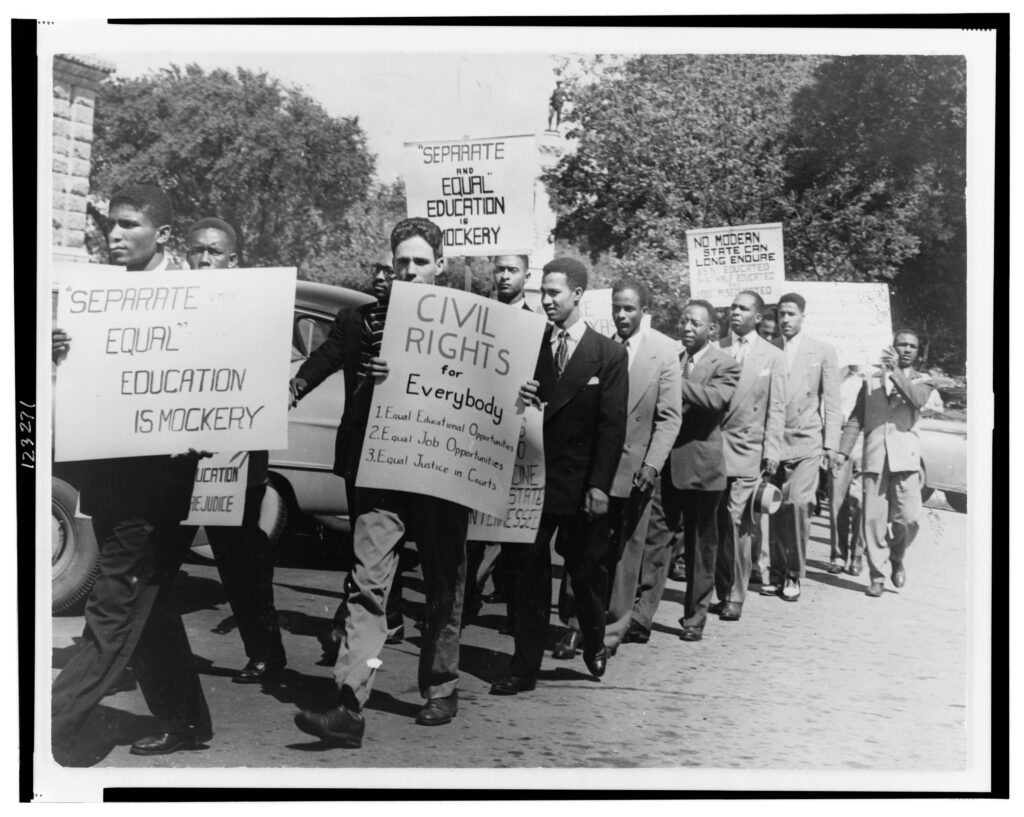
Targeting the Law School was a practical strategy on the part of the NAACP. It allowed them to wage battle in a field of higher education that was mostly occupied by men and to avoid the most contentious issue—that of interracial mixing between men and women. It also oriented the legal challenge directly within the familiar realms of the educational experiences of the judges themselves.14 Finally, after more than four years of legal battle, on June 5, 1950, the U.S. Supreme Court ruled unanimously that Sweatt must be admitted, desegregating graduate school coursework for Black students and striking a major blow to segregation. Sweatt v. Painter was a key step on the path to the 1954 case Brown v. Board of Education that finally ended lawful segregation in education at all levels.
In the fall of 1950, thirty-seven-year-old Sweatt entered UT Law School, however, the physical and emotional tolls of his struggle came at great personal cost to him and his family. He was racially harassed and threatened during his time as a law student. He also suffered severe health issues and underwent an emergency appendectomy surgery. Sweatt and his wife, Constantine Mitchell, divorced not long after the case concluded15 and he ended up leaving law school in the summer of 1952. Subsequently, he received a scholarship to study at Atlanta University’s Graduate School of Social Work and earned a master’s degree from that school in 1954. For the rest of his career, Sweatt worked with organizations like the NAACP and the Urban League to advance civil rights for African Americans.
William Astor Kirk also began at UT in the fall of 1950 and received his PhD in Government in August 1958. Kirk used his Huston-Tillotson classrooms as laboratories for teaching civic engagement to his students. He was a major protagonist in integrating the Austin Public Library in 1951 and ending segregation in the Methodist church. He and his students were also instrumental in desegregating municipal recreational facilities and services, including Zilker Park and Barton Springs.16
Footnotes
- Michael Lowery Gillette, “The NAACP in Texas, 1937-1957” (The University of Texas at Austin, 1984), 56. ↩︎
- Ibid., 56–57. ↩︎
- Ibid., 60–61. ↩︎
- Theophilus S. Painter to Grover Sellers, February 26, 1946, Charles T. McCormick Papers Box I115, Folder 5 “Trial document and Correspondence, 1946-1949,” Archives and Special Collections, Tarlton Law Library, Jamail Center for Legal Research, University of Texas School of Law. ↩︎
- Gillette, “The NAACP in Texas, 1937-1957,” 63–64. ↩︎
- Alan Sherman, John Q. Taylor, King Biography: The Formative Years, 1999, 13–14, Dr. John Q. Taylor King papers, the Huston-Tillotson University Downs-Jones Library Archive and Special Collections, Austin, Texas. https://cdm17014.contentdm.oclc.org/digital/collection/JQTKing/id/37/rec/25. ↩︎
- Oral History Interview of Ada Anderson. Folder 11, Tapes 12-14, interview by Sheree Scarborough, August 25, 1992, 17–19, Ada Anderson Oral History Collection, The Dolph Briscoe Center for American History, University of Texas at Austin. ↩︎
- Ibid. ↩︎
- “Informer Chooses Governor W.H. Hastie As ‘Man of the Year,’” The Dallas Express, December 28, 1946, The Dolph Briscoe Center for American History, University of Texas at Austin. ↩︎
- “35 Placard-Carrying Negroes Are Refused Admission to UT,” The Daily Texan, April 28, 1949, 1. ↩︎
- Virginia Forbes, “College Seniors Seek Graduate School Entry,” The Austin Statesman, April 27, 1949. ↩︎
- “Negroes Expected to File Suits for UT Admission,” The Austin Statesman, April 28, 1949. ↩︎
- Amilcar Shabazz, Advancing Democracy: African Americans and the Struggle for Access and Equity in Higher Education in Texas (University of North Carolina Press, 2004), 71–79. ↩︎
- Gillette, “The NAACP in Texas, 1937-1957,” 44–45. ↩︎
- Ibid., 92–96. ↩︎
- W. Astor Kirk, One Life: Three Professional Careers (Long Beach, California: Magic Valley Publishers, 2007). ↩︎
HEMAN MARION SWEATT
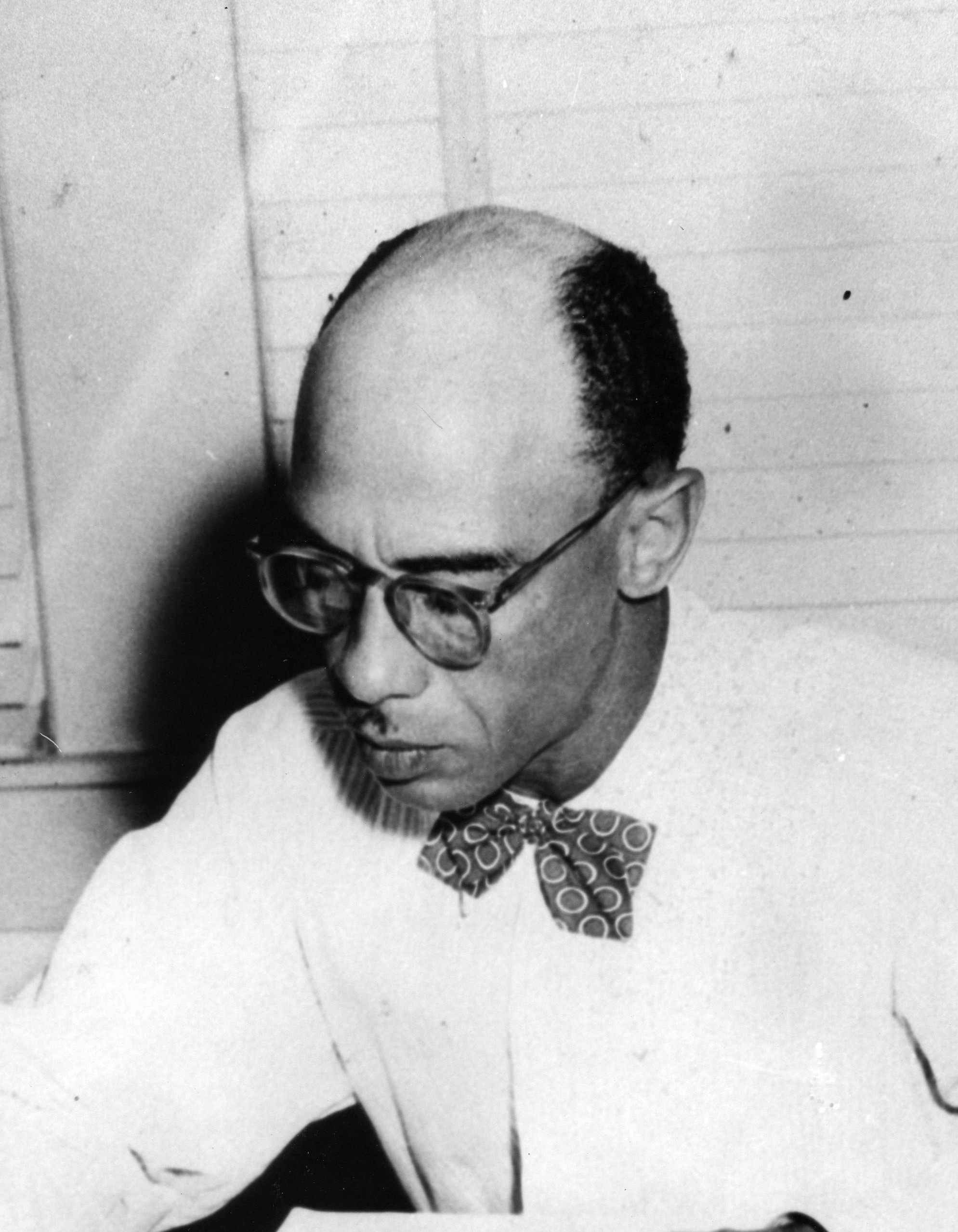
CIVIL RIGHTS ACTIVIST AND UT LAW STUDENT
FALL 1950
Heman “Bill” Marion Sweatt (1912-1982) was a Houston civil rights activist and organizer. In collaboration with the NAACP, Sweatt attempted to enroll in the School of Law at the University of Texas in February 1946 but was rejected on account of his race. After more than four years of litigation, Sweatt won a historic victory on June 5, 1950 that desegregated all graduate education and paved the way to Brown v. Board of Education four years later. Sweatt entered UT Law School in the fall of 1950.
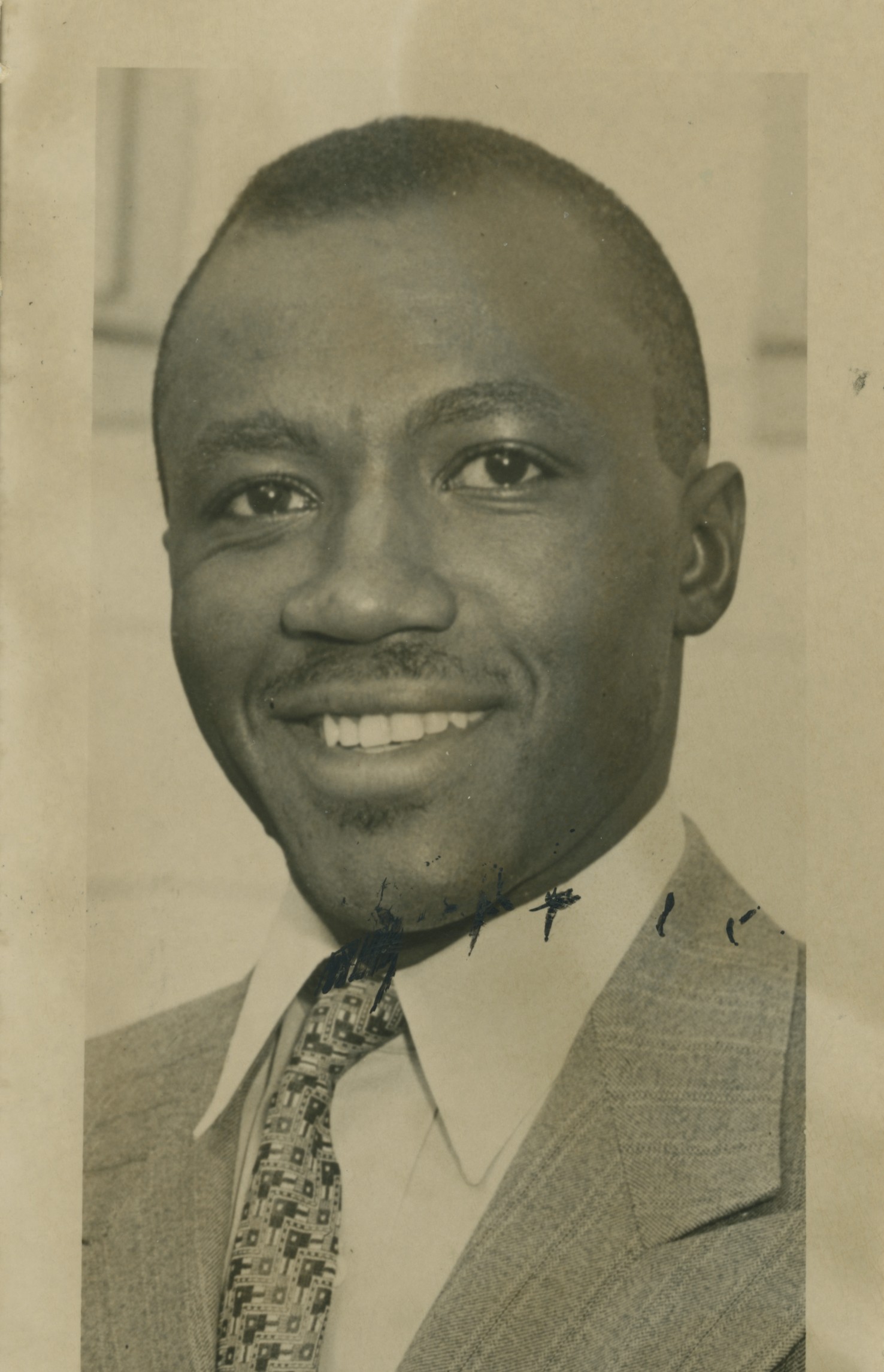
WILLAM ASTOR KIRK
AUSTIN CIVIL RIGHTS ACTIVIST AND UT GRADUATE STUDENT
FALL 1950
William Astor Kirk, PhD (1922-2011) grew up outside of Marshall, in rural East Texas. Kirk studied at Wiley College, but finished his B.A. and M.A. at Howard University and taught at at what is now called Huston-Tillotson University. On Dec. 4, 1947, Kirk attempted to register for doctoral program in political science at the University of Texas. When he was refused admission, the Austin Chapter NAACP President James Hemanway Morton supported Kirk and NAACP lawyers filed suit in early 1948. University officials tried to have Kirk take classes off campus in the YMCA alone, but Kirk declined separate treatment.
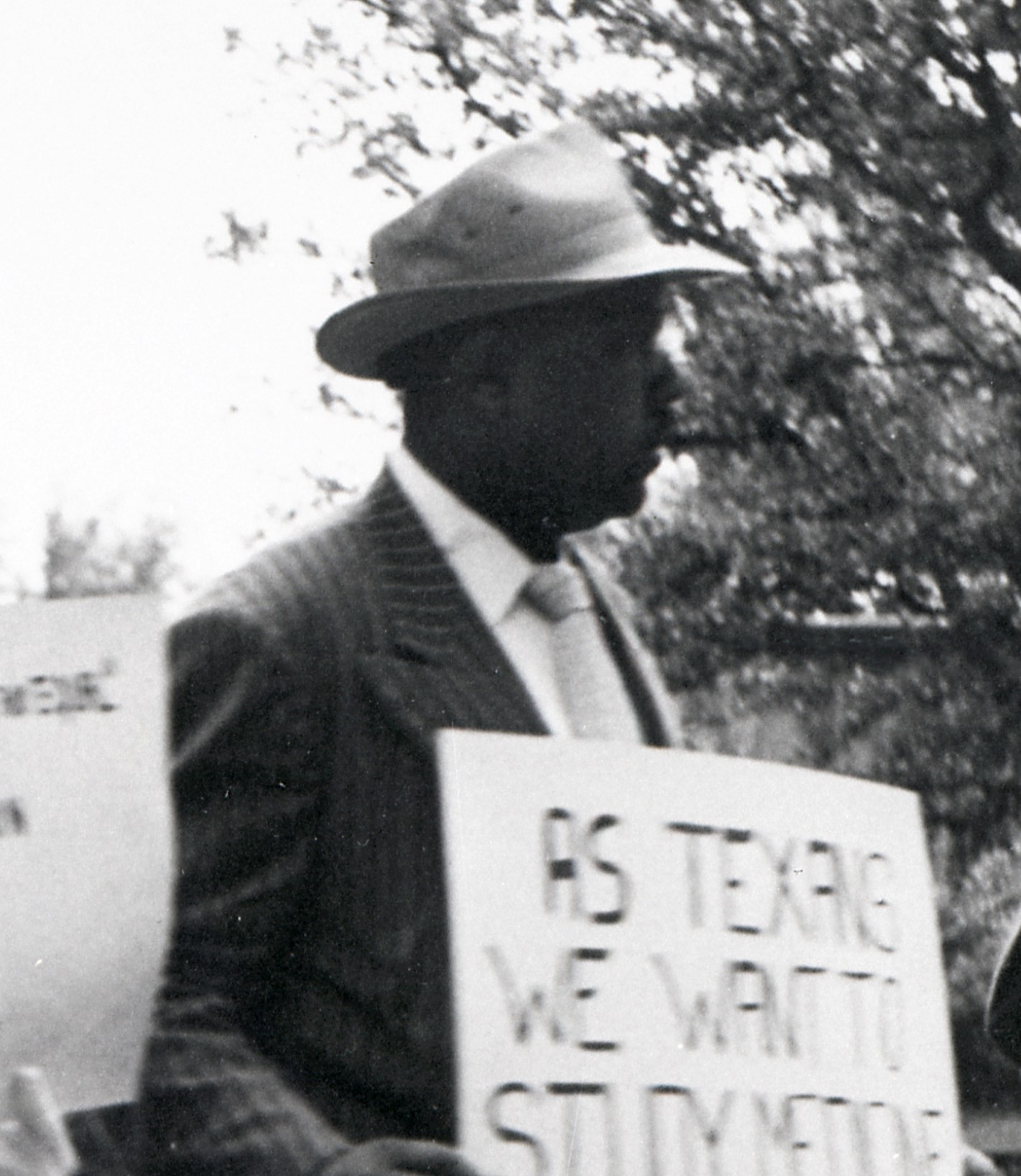
JAMES HEMENWAY MORTON
PROFESSOR AND AUSTIN CHAPTER NAACP PRESIDENT
1940s-1950s
James Hemenway Morton (1903-1979) became the president of the Austin chapter of the NAACP that Juanita Craft had helped to activate in the mid-1940s. Morton had earned his master’s degree at the University of Chicago in 1935 and was a chemistry professor at Samuel Huston College (now Huston-Tillotson University). Morton and William Astor Kirk helped organize the logistics for a state wide, student-led mass registration protest on April 27, 1949.
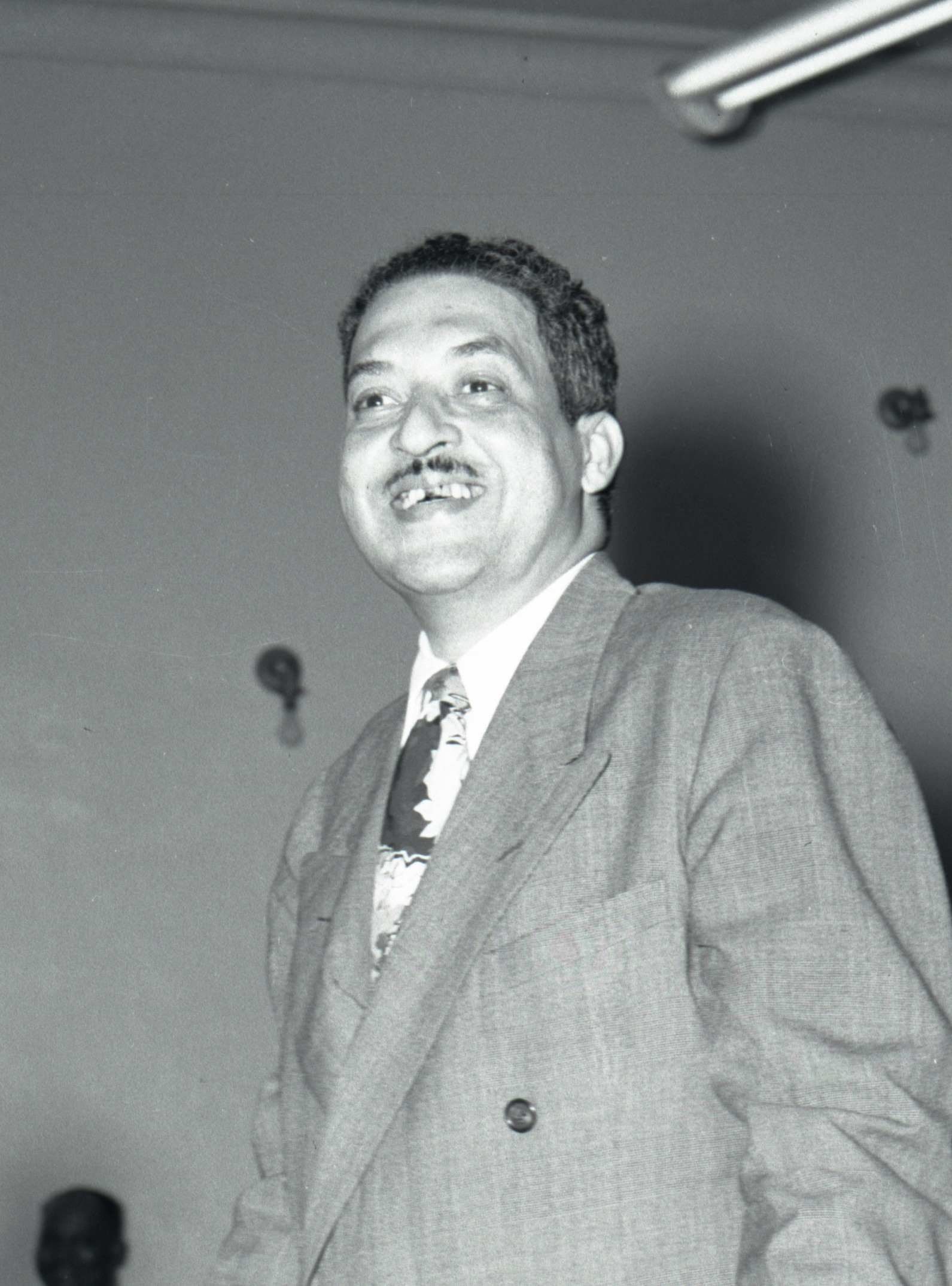
THURGOOD MARSHALL
NAACP CIVIL RIGHTS LAWYER AND FIRST BLACK U.S. SUPREME COURT JUSTICE
1930s-1950s
Before Thurgood Marshall (1908-1993) broke the colorline on the U.S. Supreme Court bench in 1967, he worked tirelessly as a lawyer for the National Association for the Advancement of Colored People (NAACP) to end Jim Crow segregation. Throughout the 1930s and 1940s he litigated hundreds of civil rights cases across the South, including Sweatt’s case.